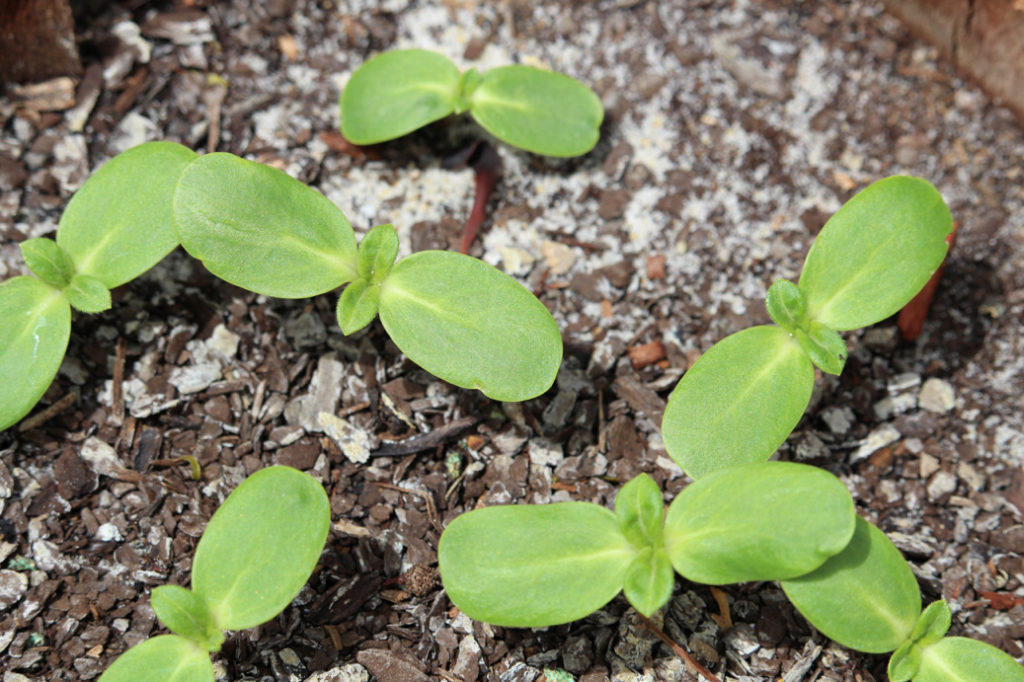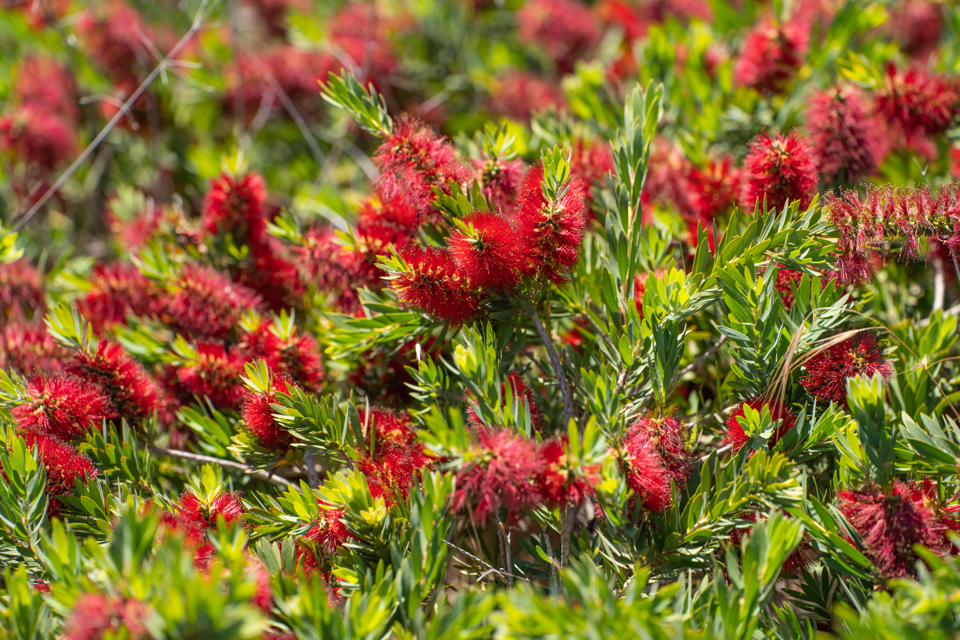SHRUBS > CALLISTEMON
Reviewed By ROY NICOL

Roy is a Professional Gardener and Horticultural Consultant, specialising in large garden year-round maintenance and garden development. He is an RHS Master of Horticulture and uses his research in the application of no-dig methods in ornamental garden settings. Roy has been a Professional Gardener for more than six years and is a member of the Chartered Institute of Horticulture, Professional Gardener's Guild and Association of Professional Landscapers (Professional Gardener).
Some Callistemon or ‘Bottlebrush’ varieties have certain charming qualities, such as a citrusy scent, reddish leaves, and pulling in hummingbirds, but they all have that one special feature: flowers.
Usually bright red, bottlebrushes seem to have been created straight from Mother Nature’s factory.
Callistemons are large shrubs or small trees that can be grown outdoors in the UK’s milder regions.
Overview
| Botanical Name | Callistemon |
| Common Name(s) | Bottlebrush |
| Plant Type | Shrub |
| Native Area | Australia |
| Hardiness Rating | H2/H3 |
| Foliage | Evergreen |
| Flowers | Flowering bottlebrush spikes that are usually red, but can come in a range of colours |
| When To Plant | May and June |
| When To Prune | April and May (or after flowering) |
Sunlight
Preferred
Full Sun
Exposure
Sheltered
Size
Height
1.5 – 4M
Spread
1.5 – 4M
Bloom Time
Spring / Summer
Soil
Preferred
Clay, loam or sand
Moisture
Moist but well-drained
pH
Acidic to neutral
You may remember how amused you felt when you first saw red bottlebrushes sticking out of a little tree, and if you haven’t seen such a sight yet, well, prepare to be amused at this fascinating member of the Plant Kingdom.
‘Bottlebrush’ is a small ornamental tree, technically a shrub, whose species fall under Genus Callistemon or Genus Melaleuca.
Both Genus belong to the Myrtle Family (Myrtaceae) which includes myrtle, eucalyptus, and clove trees, among others.1Bottlebrush. (n.d.). Standford: Robert Seigel. Retrieved March 13, 2023, from https://web.stanford.edu/~siegelr/flora/bottlebrush.html

These plants, as charming as they are amusing, are native to Australia and one or two nearby Melanesian islands.2Bottlebrush – Callistemon –. (n.d.). Australian National Herbarium. Retrieved March 13, 2023, from https://www.anbg.gov.au/callistemon/
So how can we grow Callistemon in the UK?
As it happens, most Callistemon species inhabit Australia’s Eastern belt which is known for its temperate to sub-tropical climate.3Australia’s climate – drivers, variability and extremes |. (n.d.). CoastAdapt. Retrieved March 13, 2023, from https://coastadapt.com.au/australias-climate-drivers-variability-and-extremes
Unfortunately, species as well as cultivars are frost-tender and cannot tolerate hard frosts below -5°C.

Though all bottlebrush species are classified as shrubs, some have the form of shrubby plants while others develop into small trees with proper trunks.
An example of the former is Callistemon viridiflorus or Melaleuca virens while an example of the latter is C. viminalis or M. viminalis.
Both forms are highly ornamental.
Though 2-6m are common heights for these shrubs and trees, they can be as small as 60cm and as tall as 10m.
How To Plant
Callistemon can be grown from seed, propagated from semi-hardwood cuttings, or bought as potted plants.
Plants grown from seeds may or may not turn out to be of the particular species you think you have sown as bottlebrushes hybridise very freely.
The tiny seeds should be sown in mid to late spring.

They may be started in dampened potting soil and should be scattered on top of it and not sown at all deeply.
The container should be placed in full daylight, be it indoors, and kept in a warm place.
Seeds should be watered every two days and the soil should be kept consistently moist.
They will germinate in 2-3 weeks.

Callistemon varieties are also available as young plants in containers and are popular with home gardeners in this form.
If the variety allows, you may be able to keep the shrub or tree in a container, should you wish to do so.
What you will need to do is prune it so that it will not exceed the height and spread allowable for the container.
Where To Plant
Callistemon varieties are frost-tender with hardiness ratings of H2 or H3 (up to -5°C).
They can be grown outdoors in only the mildest regions of the United Kingdom.
If you live in a region that is H4 or colder, you will need to grow bottlebrush trees in a greenhouse.

You can still grow bottlebrush shrubs in a planter so that it can be brought indoors for the winter, assuming you have enough space in a room for a large shrub.
Callistemon is not the type of plant that can be grown for ornamental purposes in the northern parts or colder regions of the UK and we recommend against the casual gardener trying to do so as it may not end well.
Of course, it is another matter if you are an experienced gardener who has a heated greenhouse.
Plant Care
Sunlight
In simplified terms, bottlebrush is a creature of sun; in the United Kingdom it should be sited in full sun.

It should preferably be in a south-facing location while north-facing locations must be avoided.
It must also be in a sheltered location as it needs protection from cold winds and stiff breezes.
Soil Requirements
The best soil for bottlebrushes is a light, friable, moderately-fertile sandy loam with minimal clay content, amended with some compost or peat down to about 30cm.
It should drain very well, so you may want to make a raised bed, lay a layer of gravel or incorporate some perlite in the soil.

This ericaceous plant needs an acidic soil pH but can tolerate neutral soils.
Watering
Though bottlebrushes can cope with dry soil they are not drought tolerant.
They should be watered regularly so that the soil stays moist.
Feeding
Mature Bottlebrush shrubs and trees may be fertilised annual in early-mid spring.
A balanced fertiliser meant for flowering trees and bushes can be used but the overall size of these plants varies very widely by species and as a result of pruning, so make sure to use the right amount of fertiliser.

If you have observed excessive foliar growth and comparatively fewer flowers the previous year, then instead of balanced fertiliser use a 0-10-20 or similar fertiliser.
Winter Care
If your shrub or tree is outdoors, then you must evaluate whether or not it is sure to survive winter by checking its hardiness rating.
Common Problems
Though outdoors bottlebrushes are relatively pest-resistant and disease-free, in a greenhouse they may succumb to the usual pests including mealybugs, scale insects, and glasshouse red spider mites.
Transplanting
To transplant, dig a hole that is as deep as the plant’s root system and twice as wide.
The soil should be of the kind described above; pre-dampen the soil.
After removing the plant from the pot ensure that it is not root-bound, and if it is, try to spread out the roots.

Place it in the hole and backfill it such that the soil line is exactly as it was in the container.
Though the soil level may come a little lower on the stem, it should not be any higher.
Pack in the soil well and give the plant a good watering.
Pruning
A good time to prune Callistemon is immediately after the flowering season is over.
“The subsequent new growth will then form the flowering shoots for the following year,” shares Master Horticulturist Roy Nicol.
How you prune your plant will depend on whether you want to grow it as a shrub or a tree.
To Grow As A Shrub
To prune a young plant to grow as a shrub, allow it to put out shoots and branches initially.
Pinch off any strong stem that shows signs of becoming a leader.
Cut back all the stems by one-third.

This will encourage fresh growth and a bushier form.
Keep an eye out for strong stems that threaten to run away and for straggly growth. This type of strict pruning regimen will result in a well-balanced multi-stemmed bush.
To Grow As A Tree
To prune a young plant to grow as a tree, choose a strong leader and prune shoots and branches that are competing with it.
Also, prune shoots that emerge close to the base of the incipient trunk.
Initially allow 2-4 new branches to develop that are well spaced, are on different sides of the tree, and are at an acceptable upward angle.

Prune once a season to maintain an attractive balance and spacing between the branches and a well-shaped, even crown.
Other than that, during the flowering season deadhead regularly for appearance and also flower production.
References
- 1Bottlebrush. (n.d.). Standford: Robert Seigel. Retrieved March 13, 2023, from https://web.stanford.edu/~siegelr/flora/bottlebrush.html
- 2Bottlebrush – Callistemon –. (n.d.). Australian National Herbarium. Retrieved March 13, 2023, from https://www.anbg.gov.au/callistemon/
- 3Australia’s climate – drivers, variability and extremes |. (n.d.). CoastAdapt. Retrieved March 13, 2023, from https://coastadapt.com.au/australias-climate-drivers-variability-and-extremes


